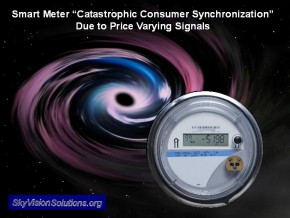Smart Meters Can Destabilize Grid, Study Says | EE Times
The simulation shows that in such a competing situation the market behaviour will tend to be wild, erratic and chaotic. An example: If the energy supply is low and therefore the price is high, most users simply will tend to postpone their energy consumption. But they wont be able to do this at infinitum, explains Bornholdt. The more machines are waiting to get started, the higher the potential demand: A bubble forms. This bubble will burst at latest in the moment the price level falls slightly. Because many consumers have postponed their washing schedule, countless washers will start to wash suddenly at the same time. This triggers a collective avalanche mechanism that charges the grids extremely, Bornholdt says. This situation makes black-outs much more probable.
According to the conclusion of the research team, the massive deployment of smart meters is a quick shot that has not been thought through. In our computing model we reproduced with various variables
what real humans would logically do in such situations. In such situations, the individual does not know which consequences arise from his actions if it is multiplied. And unfortunately those who supply the energy do not know either.
Smart Meter Time Varying Pricing Can Lead to “Catastrophic Consequences” for the Grid | Smart Grid Awareness
A new study has been released based upon research at Bremen University that reveals that the use of time varying rates implemented through the mass deployment of smart meters can lead to consumer demand avalanches resulting in smart grid blackouts.
| Density of prices for the time series as described in the caption of Fig. 2
(blue solid line). The average price is indicated with a vertical line
together with multiples of one standard deviation (dotted lines). The
density of highest acceptable prices |
For more details, see http://journals.aps.org/pre/abstract/10.1103/PhysRevE.92.012815

No comments:
Post a Comment